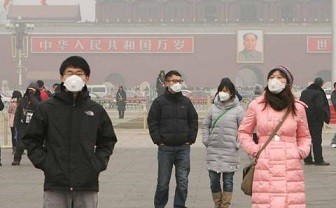Chinese scientists have identified soot aggregates as the most harmful matter in PM2.5, the Xinhua News Agency reported.
Experts from the College of Engineering of Peking University (CEPKU), Soochow University and Chinese Center for Disease Control and Prevention have found in a recent study that the fluffy soot aggregates are highly adhesive and cause the most irritation, which make them the most harmful to the human body among the four main categories of PM2.5.
Duan Huiling, a dean from CEPKU, said that when soot aggregates come in contact with the human body, their high adhesiveness prolongs contact between skin and pollutants.
Duan said that based on this study, scientists have concluded that the carbon-rich fluffy soot, which is the most harmful, was the result of incomplete combustion of hydrocarbons.
According to the report, particulate matter, or PM2.5 with an aerodynamic diameter of 2.5 micrometers or less, has long been a major concern for China in terms of air pollution, especially in urban centers such as Beijing and Shanghai.
The research study, which was already published in Scientific Reports of the Nature Publishing Group, marks the first time the nanoscale characterization of PM2.5 airborne pollutants was made.
In February this year, the Peking University's School of Public Health and Greenpeace released a study linking premature deaths to PM2.5 pollution in 31 major Chinese cities that reached 257,000 in 2013.
The year-long study said that pollution-related deaths were considered a major killer equivalent to smoking. It focused on four conditions, included lung cancer and stroke, which both have been linked to exposure to the fine particulate matter.
According to the study, around 90 premature deaths for every 100,000 people are caused by PM2.5 pollutants, which are composed of airborne particles that can penetrate the lungs.



























